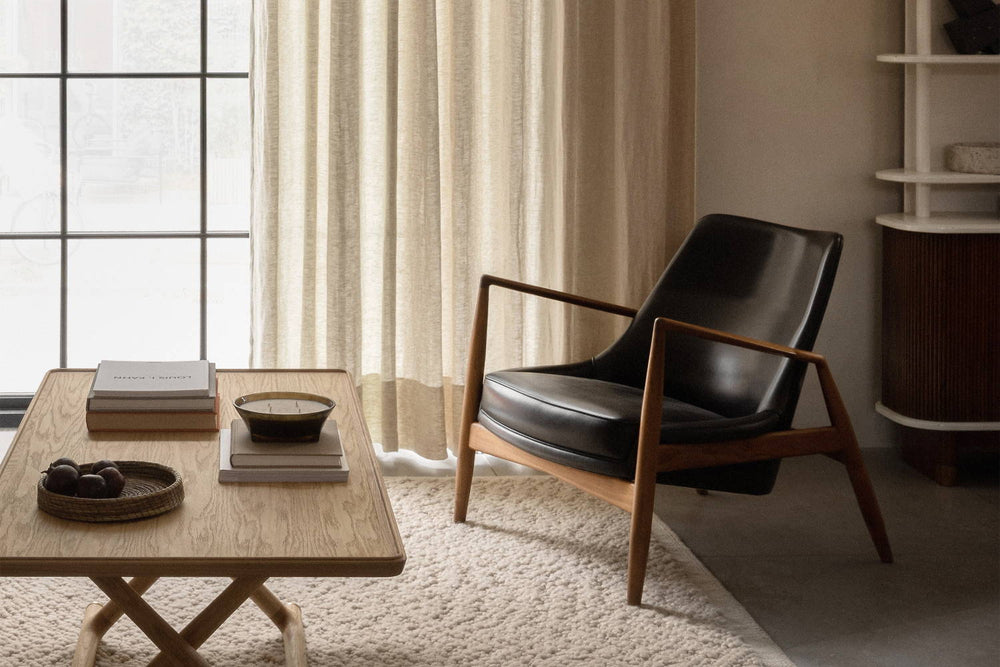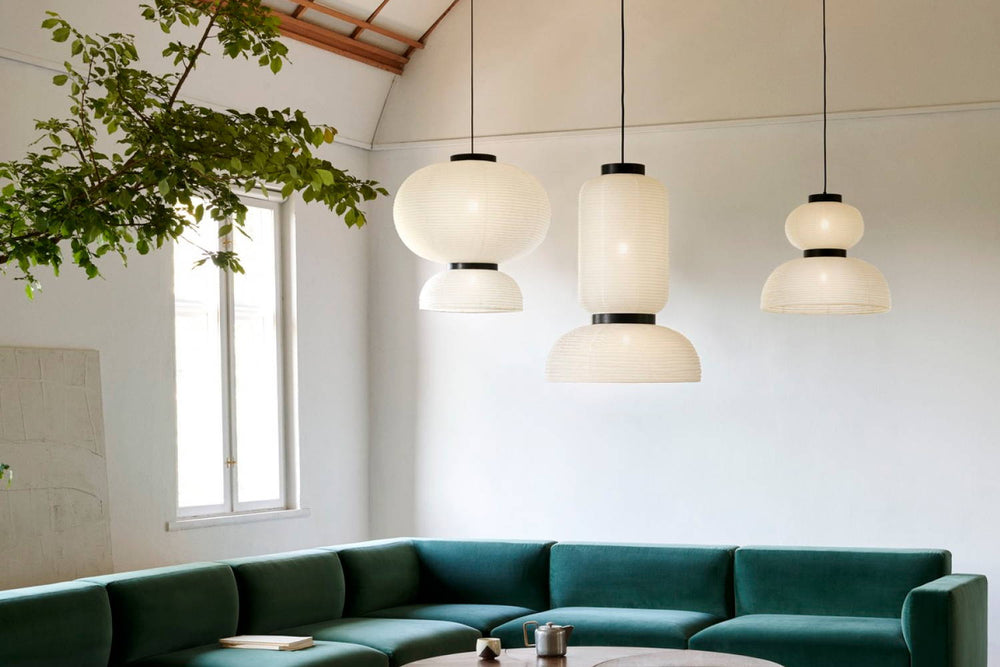In the intersection of Japanese minimalism and Scandinavian warmth lies the Zen-like realm of Japandi design—a harmonious fusion of two distinct aesthetics, each imbued with its own unique charm. Embracing simplicity, functionality, and a deep reverence for natural elements, Japandi effortlessly marries the tranquility of traditional Japanese design with the cozy, understated elegance of Scandinavian interiors. Discover the art of blending clean lines with organic textures, muted hues with subtle pops of color, and minimalist decor with cozy accents. Whether you seek to create a serene retreat for contemplation or a cozy gathering space for cherished moments with loved ones, Japandi design offers endless possibilities for crafting a living room that exudes both sophistication and warmth. Join us as we explore the essential elements of Japandi design, from furniture selection and layout principles to the delicate balance of form and function. Embrace the timeless allure of Japandi design and embark on a transformative journey towards creating a living space that not only reflects your personal style but also nurtures a sense of harmony and well-being.
Key Elements of Japandi Style for a Living Room
- Minimalist Furniture: Japandi style favors clean lines and simple forms in furniture design. Opt for low-profile sofas, sleek wooden coffee tables, and uncluttered shelving units to maintain a minimalist aesthetic
- Natural Materials: Embrace the beauty of natural materials such as wood, bamboo, stone, and rattan to add warmth and texture to the space. Incorporate these elements in furniture, flooring, and decor items like woven baskets or wooden trays
- Neutral Color Palette: Stick to a neutral color palette consisting of muted tones like whites, grays, beiges, and soft pastels. These colors create a serene and cohesive backdrop for the room while allowing natural light to enhance the space
- Cozy Textiles: Soften the minimalistic look with cozy textiles such as wool or cotton throws, plush area rugs, and oversized floor cushions. Opt for natural, breathable fabrics in earthy tones or subtle patterns to add warmth and comfort to the living room
- Japanese Influence: Incorporate elements of Japanese design such as shoji screens, tatami mats, and bonsai plants to infuse authenticity into the space. These elements bring a sense of tranquility and mindfulness, essential aspects of Japanese aesthetics
- Scandinavian Influence: Draw inspiration from Scandinavian design by incorporating hygge elements such as candles, soft lighting, and sheepskin throws. These elements add warmth and coziness to the room, creating a welcoming atmosphere for relaxation and socializing
- Functional Decor: Choose decor items that serve a purpose while adding visual interest to the room. For example, use woven baskets for storage, ceramic vases for displaying fresh flowers, or minimalist wall-mounted shelves for showcasing books or artwork.
- Balance and Symmetry: Maintain a sense of balance and symmetry in the layout and arrangement of furniture and decor items. Avoid overcrowding the space and strive for an open and airy feel that promotes relaxation and clarity of mind
By incorporating these key elements of Japandi style into your living room, you can create a harmonious and inviting space that seamlessly blends the best of Japanese minimalism and Scandinavian coziness.
Layout Ideas & Inspiration
Open Floor Plan:
- Embrace the spaciousness of an open floor plan, allowing for seamless flow between different areas within the living room
- Use area rugs to delineate specific zones, such as a sitting area, a dining space, and a relaxation corner
Low Seating Arrangement:
- Arrange low-profile seating such as floor cushions, Japanese-inspired zabuton or Scandi-style poufs around a central coffee table
- This layout encourages intimacy and conversation while maintaining an unobtrusive visual profile
Minimalist Entertainment Center:
- Opt for a sleek, minimalist entertainment center or media console with clean lines and ample storage to keep clutter at bay
- Incorporate natural wood finishes or matte black accents for a touch of sophistication
Flexible Furniture Placement:
- Choose modular or multifunctional furniture pieces that can be easily rearranged to adapt to different activities or gatherings
- Consider movable ottomans, nesting tables, or lightweight chairs that can be rearranged effortlessly.
Japanese-inspired Tatami Area:
- Create a designated tatami area with traditional Japanese tatami mats or a tatami-inspired rug
- Place low seating or floor cushions around a low coffee table to evoke a sense of Zen-like simplicity and comfort
Scandinavian Dining Nook:
- Designate a cozy Scandinavian-inspired dining nook adjacent to the living area
- Use a minimalist dining table paired with Scandi-style chairs or benches, complemented by pendant lighting and statement artwork or wall decor
Biophilic Design Elements:
- Integrate biophilic design elements such as indoor plants, natural stone accents, or a living green wall to connect the space with nature
- Arrange seating to maximize views of outdoor greenery or natural light sources, fostering a sense of tranquility and well-being
Flexible Partitioning:
- Use sliding shoji screens or sheer curtains to partition the living room for privacy or to create distinct zones without compromising the open feel of the space
- These partitions can also serve as decorative elements, adding depth and texture to the room
Lighting Design:
- Incorporate a mix of ambient, task, and accent lighting to create layers of illumination and ambiance
- Use paper lanterns, pendant lights with woven shades, or minimalist floor lamps to enhance the Japandi aesthetic while providing adequate lighting for various activities
By incorporating these layout ideas and inspiration into your Japandi living room design, you can create a harmonious and inviting space that reflects the timeless elegance and serene simplicity of Japanese minimalism and Scandinavian coziness.
Practical Tips for Achieving the Japandi Look
- Simplicity is Key: Keep the design of your living room clean and uncluttered by opting for minimalist furniture and decor. Choose pieces with simple lines and subtle details to maintain a sense of calm and balance
- Incorporate Natural Materials: Embrace the use of natural materials such as wood, bamboo, stone, and rattan. Incorporate these materials into furniture, flooring, and decor elements to add warmth and texture to the space
- Choose a Neutral Color Palette: Stick to a neutral color palette consisting of soft, muted tones such as whites, grays, beiges, and earthy hues. This creates a serene backdrop for the room and allows natural light to enhance the space
- Mix Japanese and Scandinavian Elements: Blend elements from both Japanese and Scandinavian design aesthetics to achieve the perfect balance of minimalism and coziness. Combine Japanese-inspired simplicity with Scandinavian hygge elements for a harmonious look
- Low Furniture Profile: Choose low-profile furniture pieces to create a sense of openness and spaciousness in the room. Opt for sofas, coffee tables, and seating arrangements that sit close to the ground to maintain a minimalist feel
- Functional Decor: Select decor items that serve a purpose while adding visual interest to the space. Choose practical accessories such as woven baskets for storage, ceramic vases for displaying fresh flowers, and minimalist lighting fixtures for ambiance
- Balance of Form and Function: Strive for a balance between form and function in your design choices. Select furniture and decor that not only look beautiful but also serve a practical purpose in the room
- Textural Contrast: Introduce textural contrast by layering different materials and fabrics throughout the space. Mix smooth surfaces with rough textures, such as pairing a sleek wooden coffee table with a soft, plush rug
- Seek out Natural Elements: Bring the outdoors in by incorporating natural elements such as indoor plants, stones, and water features. These elements add a sense of tranquility and connection to nature, which are central to both Japanese and Scandinavian design philosophies
- Personalize with Minimalist Accents: Add personality to the space with minimalist accents that reflect your personal style. Choose a few carefully curated decor items, such as artwork, textiles, or ceramics, to add visual interest without overwhelming the simplicity of the design
By following these practical tips, you can achieve a Zen-inspired Japandi look in your living room, creating a space that is both stylish and inviting, with a perfect balance of Japanese beauty and Scandinavian utility.
Ultimately, crafting a Japandi-inspired living room layout offers a journey into the exquisite balance of minimalism, warmth, and natural elements. Through careful curation and thoughtful arrangement, you can transform your living space into a haven of tranquility and style. As you navigate the world of Japandi design, remember the core principles: simplicity, functionality, and a deep appreciation for the beauty of nature. Blend clean lines with organic textures, embrace muted tones punctuated by subtle pops of color, and harmonize minimalist decor with cozy accents to create a space that is both inviting and serene. Whether you choose a layout centered around a cozy seating area, a versatile multipurpose space, or a seamless integration of indoor and outdoor elements, let your creativity and personal style guide you. With each element thoughtfully considered, your Japandi living room will not only reflect your aesthetic sensibilities but also foster a sense of harmony and well-being for you and your loved ones.





